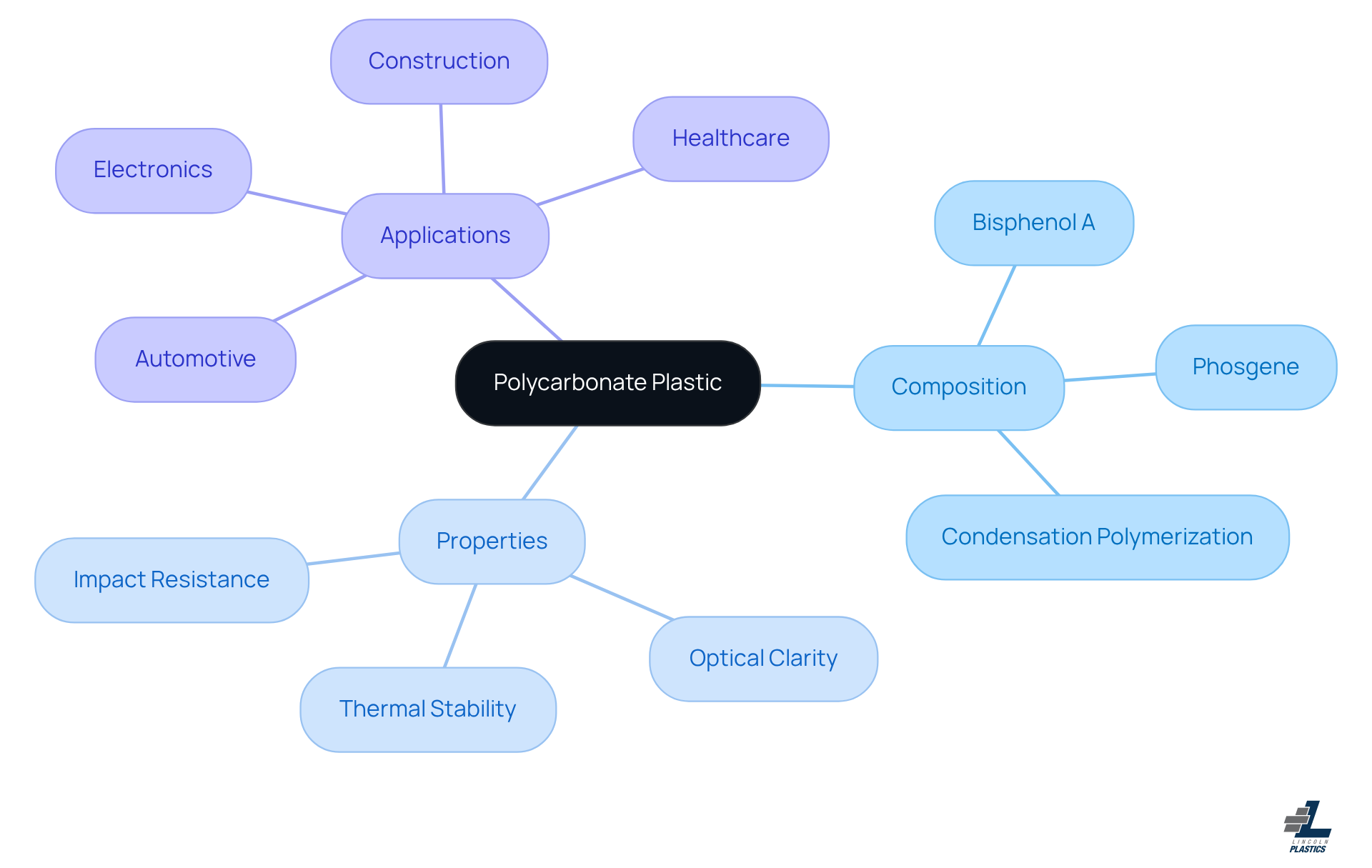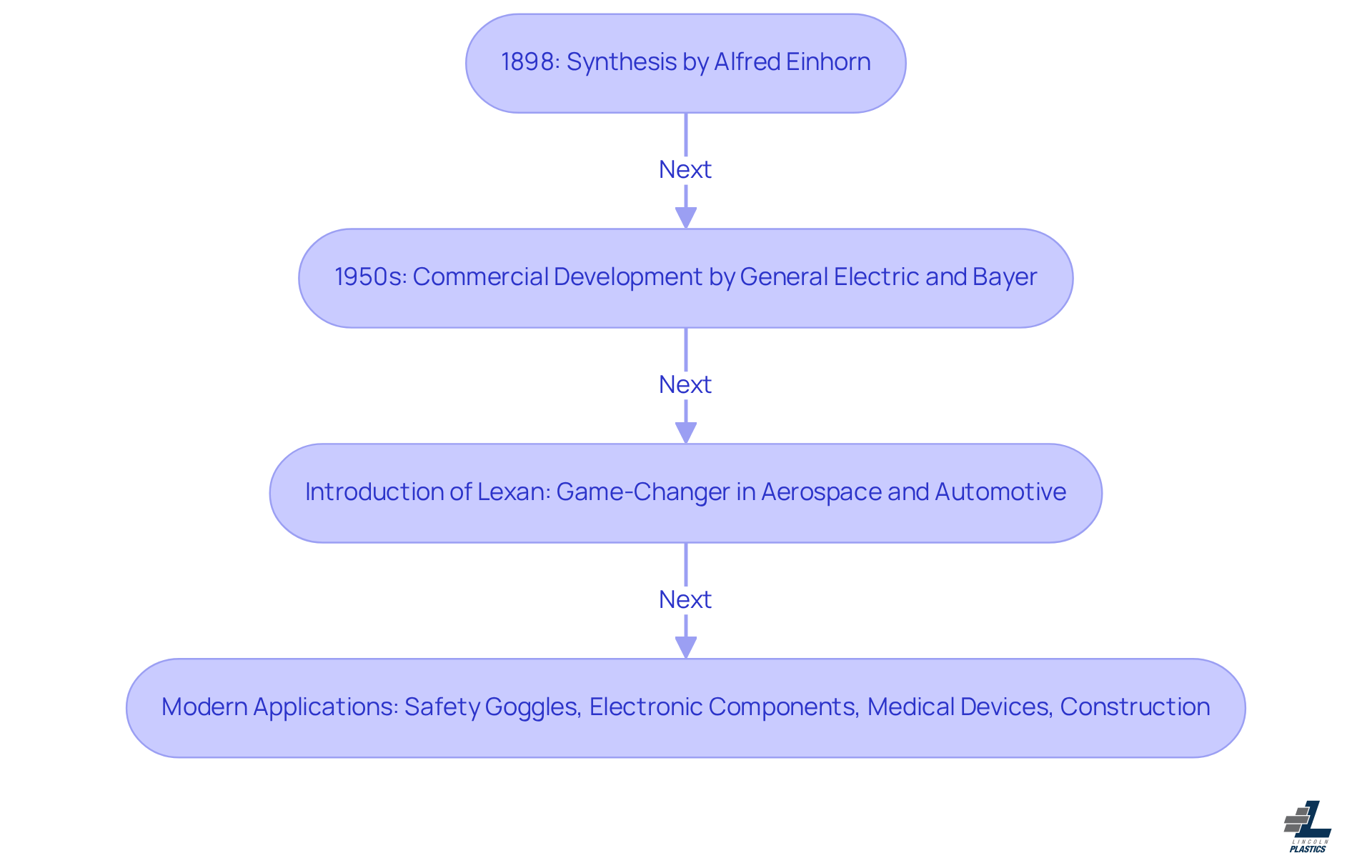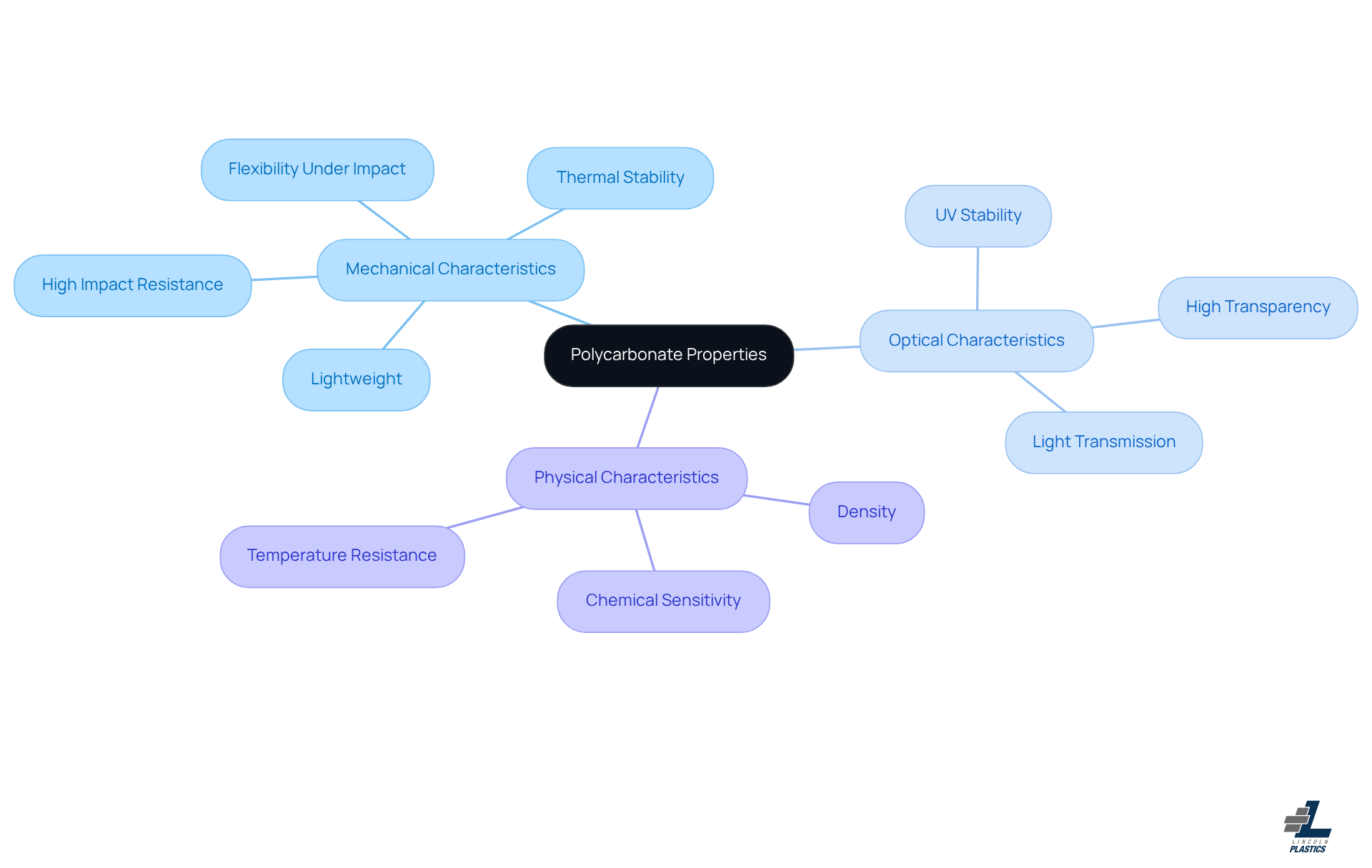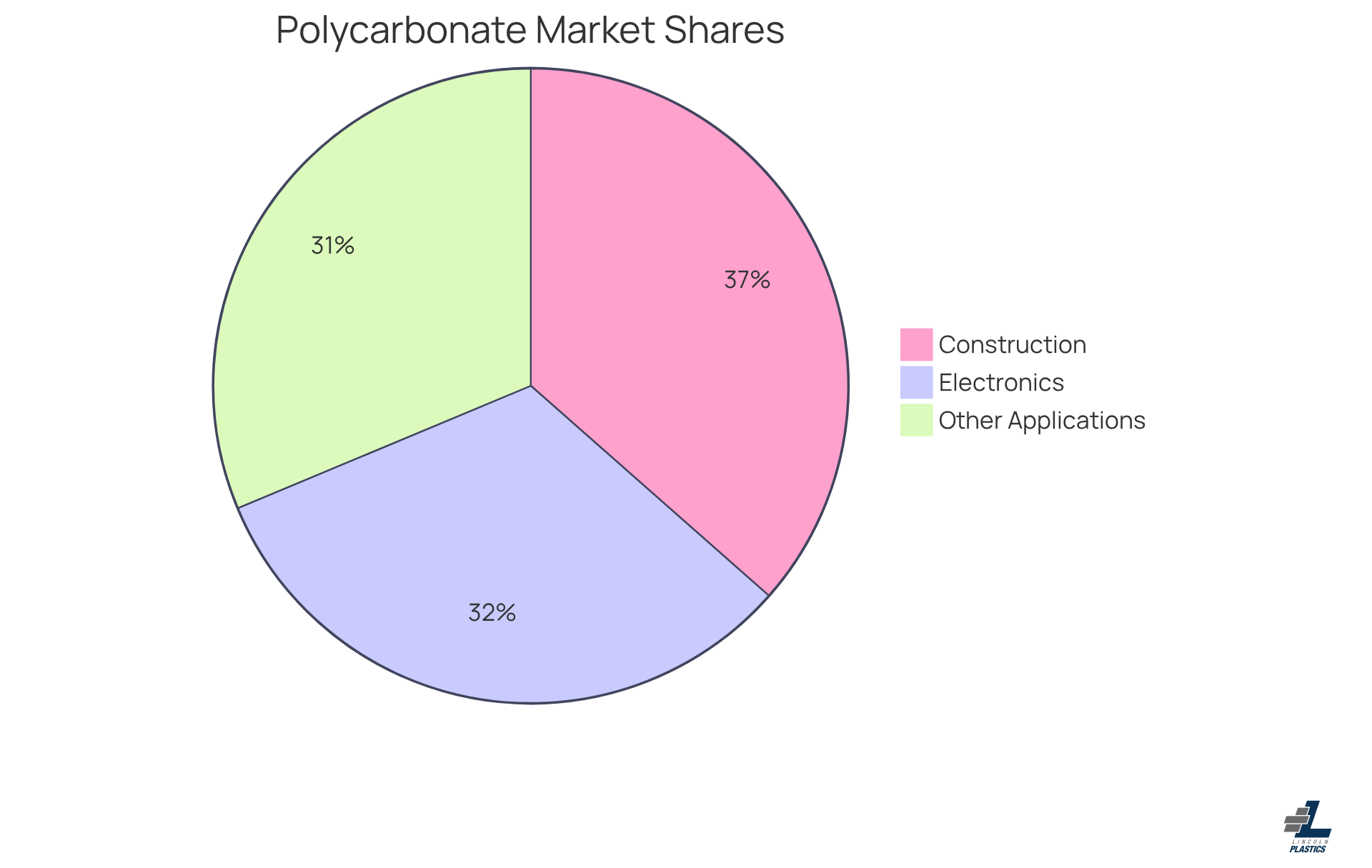
What is PC Plastic? Understanding Its Properties and Applications
Introduction
Polycarbonate plastic, or PC plastic as it’s often called, is pretty amazing! This material has really changed the game across various industries with its unique properties and applications. You see, polycarbonate is known for its incredible impact resistance, optical clarity, and lightweight nature, making it a go-to choice in everything from construction to electronics. But what’s truly fascinating about this versatile thermoplastic isn’t just what it’s made of; it’s the rich history behind it and the innovative ways it keeps evolving.
So, how did polycarbonate go from a lab creation in the late 19th century to becoming a must-have in modern manufacturing? Let’s dive into that journey together!
Defining Polycarbonate Plastic: Composition and Significance
Have you ever thought about the materials that make our everyday items so durable? Well, let’s talk about polycarbonate (PC). This versatile thermoplastic polymer, which is classified as pc plastic, stands out because of its unique carbonate groups in its chemical structure. It’s not just any pc plastic; it’s known for its incredible impact resistance, optical clarity, and thermal stability.
So, what goes into making this amazing material? The main ingredients are bisphenol A (BPA) and phosgene. These components undergo a condensation polymerization process, resulting in long-chain polymers. This special composition gives pc plastic its remarkable properties, making it a preferred choice in industries like automotive, electronics, and construction.
What’s really cool about polycarbonate is its ability to combine strength with lightweight characteristics. It offers a durable alternative to glass and other materials. Imagine a pc plastic that is essentially unbreakable and transmits light even better than many types of glass! This makes it super attractive for applications that require both clarity and strength.
So, next time you see something made from polycarbonate, you’ll know just how special it is!

Historical Development of Polycarbonate: From Inception to Modern Applications
Did you know that polycarbonate has quite the history? It was first synthesized way back in 1898 by a German chemist named Alfred Einhorn. He really set the stage for what would become a super versatile polymer. But it wasn’t until the 1950s that things really took off, thanks to some innovative folks at General Electric and Bayer who developed pc plastic for commercial use.
Now, let’s talk about Lexan. This brand of pc plastic became a game-changer, especially in the aerospace and automotive industries. Over the years, polycarbonate has kept evolving to keep up with modern technology. You can find it in all sorts of products made from pc plastic, from safety goggles to electronic components. Isn’t that impressive?
This adaptability shows just how important polycarbonate is. PC plastic plays a vital role in various sectors, including those of medical devices and construction components. So, next time you see something made from polycarbonate, you might just appreciate its journey a little more!

Key Properties of Polycarbonate: Mechanical, Optical, and Physical Characteristics
Have you ever found yourself in need of a material that can really take a beating? Well, polycarbonate might just be your answer! This remarkable material is known for its high impact resistance, which stays strong even when the temperatures drop. So, if you’re looking for something durable, you’re in luck!
Now, let’s talk about clarity. Polycarbonate offers high transparency that rivals glass, along with fantastic light transmission. Imagine using it in places where you want to let in all that natural light without sacrificing strength. Plus, it’s lightweight yet incredibly strong - its density is about half that of glass!
But wait, there’s more! Polycarbonate also boasts good thermal stability, meaning it holds up well across a wide range of temperatures. This makes it a versatile choice for everything from protective gear to architectural elements. So, whether you’re designing a new project or just curious about materials, polycarbonate is definitely worth considering!

Applications of Polycarbonate: Versatility Across Industries
Polycarbonate is pretty versatile, right? You can find it in all sorts of applications across different industries. Take construction, for instance. PC plastic panels are increasingly the preferred choice for roofing, glazing, and soundproofing. Why? Well, they’re super durable and offer great thermal insulation. In fact, a recent study showed that PC plastic sheets snagged over 36.5% of the market share in 2023 just in the construction sector! That’s a clear sign of their popularity in building projects. Plus, construction experts have noted that this material not only looks good but also boosts energy efficiency, making it a smart choice for modern architecture.
Now, let’s talk about electronics. Here, polycarbonate is used for protective casings and components, thanks to its fantastic insulating properties. It’s lightweight and impact-resistant, which is essential for designing compact electronic devices. Did you know that over 32.2% of the market for this material in 2023 came from the electronics sector? That’s driven by the need for sturdy yet stylish products.
But wait, there’s more! This material, known as PC plastic, is also found in safety equipment, eyewear lenses, and medical devices. It really plays a crucial role in enhancing safety and performance in our everyday products. As the industry keeps innovating, we can expect to see even more polycarbonate in construction and electronics, fueled by tech advancements and a growing demand for sustainable materials. So, what do you think? Isn’t it exciting to see how this material is shaping our world?

Conclusion
Polycarbonate plastic, or PC plastic as it’s often called, is pretty amazing! It’s strong, clear, and super versatile, which is why you’ll find it in so many different industries. Made mainly from bisphenol A and phosgene, this lightweight thermoplastic is incredibly durable. That’s why it’s become the go-to choice for everything from construction to electronics and safety gear.
Now, let’s talk about how polycarbonate has evolved. It all started back in the late 19th century with some lab work, and look where we are today! Its impressive impact resistance, optical clarity, and thermal stability are key reasons why it’s so popular in modern applications. Plus, with its growing presence in construction and electronics, it’s clear that polycarbonate is a material that meets the demands of today’s designs and functionalities.
As industries keep pushing for innovation and sustainability, the role of polycarbonate plastic is only going to grow. Embracing the benefits of PC plastic not only boosts product safety and performance but also fits right in with the quest for energy efficiency and sleek architectural designs. So, why not consider the potential of polycarbonate? It could lead to some groundbreaking advancements, making it essential for designers, engineers, and manufacturers to think about this versatile material in their upcoming projects.
Frequently Asked Questions
What is polycarbonate plastic?
Polycarbonate plastic is a versatile thermoplastic polymer known for its unique carbonate groups in its chemical structure, offering incredible impact resistance, optical clarity, and thermal stability.
What are the main ingredients used to make polycarbonate?
The main ingredients used to make polycarbonate are bisphenol A (BPA) and phosgene, which undergo a condensation polymerization process to form long-chain polymers.
What are the key properties of polycarbonate plastic?
Key properties of polycarbonate plastic include its remarkable impact resistance, optical clarity, thermal stability, and its ability to combine strength with lightweight characteristics.
In which industries is polycarbonate commonly used?
Polycarbonate is commonly used in industries such as automotive, electronics, and construction due to its durability and versatility.
How does polycarbonate compare to glass?
Polycarbonate offers a durable alternative to glass, being essentially unbreakable and transmitting light even better than many types of glass, making it suitable for applications requiring both clarity and strength.
List of Sources
- Defining Polycarbonate Plastic: Composition and Significance
- Polycarbonate: Beyond Plastic (https://stabilitamerica.com/blog/is-polycarbonate-plastic)
- Polycarbonate (https://curbellplastics.com/materials/plastics/polycarbonate?srsltid=AfmBOorP0ytCCaLw8g78BZBFDllOuzSS_YXQ13zs1zQ8BIddguYSM2R4)
- The Rise of Polycarbonate Manufacturers: Innovations in Shaping the Future | GON Plastics (https://gonplastics.com/a-the-rise-of-polycarbonate-manufacturers-innovations-in-shaping-the-future.html)
- Polycarbonates Market Forecasts, Market Trends and Impact Analysis (2025 - 2032) (https://openpr.com/news/4278425/polycarbonates-market-forecasts-market-trends-and-impact)
- Polycarbonate Market Size, Share, Trends, Growth Report [2032] (https://fortunebusinessinsights.com/polycarbonate-market-108509)
- Historical Development of Polycarbonate: From Inception to Modern Applications
- Polycarbonates—Tough Guy in the Plastics World for Strength and Durability (https://hpmanufacturing.com/polycarbonates-strength-and-durability)
- North America Polycarbonate (PC) Market Forecasts to 2030 (https://mordorintelligence.com/industry-reports/north-america-polycarbonate-pc-market)
- US Polycarbonate Manufacturing Gets Major Boost (https://plasticstoday.com/extrusion-film-sheet/us-polycarbonate-manufacturing-gets-major-boost)
- Polycarbonate Market Size & Share | Industry Growth 2029 (https://databridgemarketresearch.com/reports/global-polycarbonate-market?srsltid=AfmBOoqyJZkM8nzobNra9CAUAG3NJWdt4xiWCyMrX8mJulcabdQLYydu)
- The Invention of Polycarbonate: A Tale of Two Chemists (https://plasticstoday.com/medical/the-invention-of-polycarbonate-a-tale-of-two-chemists)
- Key Properties of Polycarbonate: Mechanical, Optical, and Physical Characteristics
- 5 Property Comparison for Polycarbonate and Glass - Which Is Better? (https://aikon.fi/en/insight/5-property-comparison-for-polycarbonate-and-glass-which-is-better)
- Polycarbonate: Advantages, Disadvantages, and Applications (https://protolabs.com/materials/polycarbonate)
- Discover Polycarbonate: A Manufacturing Game-Changer (https://ptsmake.com/what-are-the-key-advantages-of-polycarbonate-in-manufacturing)
- (https://sinhaiplast.com/blog/the-superior-impact-resistance-of-polycarbonate-glazing)
- Applications of Polycarbonate: Versatility Across Industries
- Applications Of Polycarbonate (PC) in The Automotive Industry - News (https://polychemer.com/news/applications-of-polycarbonate-pc-in-the-auto-81995646.html)
- Polycarbonate Market (https://market.us/report/polycarbonate-market)
- Polycarbonate Market Size & Share | Industry Growth 2029 (https://databridgemarketresearch.com/reports/global-polycarbonate-market?srsltid=AfmBOoo2WNgJkmKNKG7zAa0Crr7VUCLQ8G_uJzWyA-nYiGavZZfnEsF1)
- Polycarbonate Market Size, Share, Trends, Growth Report [2032] (https://fortunebusinessinsights.com/polycarbonate-market-108509)
- United States Automotive Polycarbonate Glazing Market Size, Share, Trends, Latest innovations 2025 - Exclusive Report by DatamIntelligence (https://openpr.com/news/4276063/united-states-automotive-polycarbonate-glazing-market-size)


